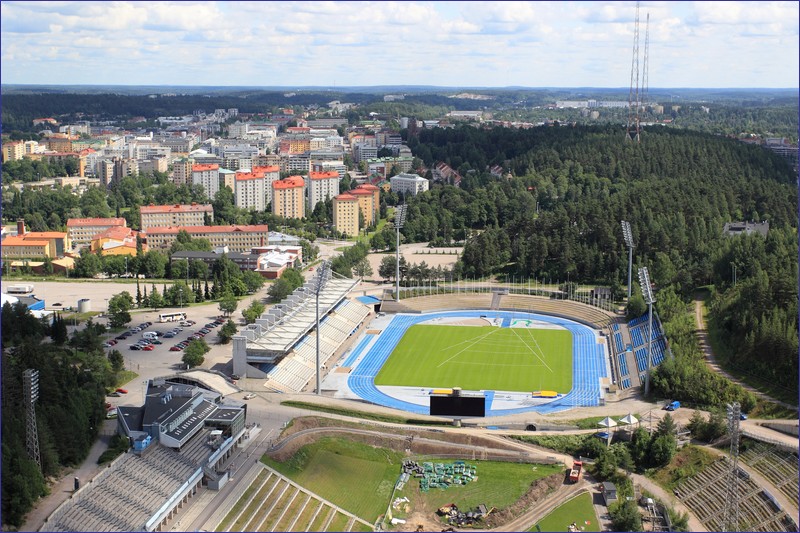Lahti is an important winter sports center of international fame. The city has over 120,000 inhabitants. It is located on Lake Vesijärvi, at the edge of the Finnish Lakeland. Due to its proximity to Helsinki and excellent rail connections, it is a popular destination for day trips from the Finnish capital. Each year, the World Cup competitions in cross-country skiing, ski jumping, Nordic combined, and biathlon are held here.
Lahti was first mentioned in documents in 1445. In 1877, almost the entire village was burned to the ground. The following year, the village was granted market town rights. An Empire-style grid plan was approved, which included a large market square and wide boulevards. The town grew rapidly in the 1930s. At that time, numerous factories were established, including several furniture factories owned by the famous architect Alvar Aalto.
In terms of historic monuments, Lahti does not stand out. Among the buildings, the Lahden yhteiskoulu school from 1896 is noteworthy. The railway and bus stations date from the 1930s, but the buildings are not very attractive. The red-brick town hall, completed in 1912, is certainly worth seeing. The building, designed by Eliel Saarinen in the Art Nouveau style, was seriously damaged during World War II.
There are many museums in Lahti. In recent years, the most popular has been the Lahti Museum of Visual Arts Malva, opened in the Malski old brewery building in the spring of 2022. Malva is a new museum full of art, design, posters, and culture in Lahti.
In the sports complex with ski jumps, located not far from the city center, there is the Ski Museum. The museum showcases winter sports-related artifacts. The winter sports collection includes old and modern material representing cross-country skiing, ski jumping, Nordic combined, and biathlon, as well as alpine skiing. Visitors can learn about the history of winter sports in Finland and beyond.
Another popular attraction is the Radio and TV Museum. The museum is housed in a broadcasting station located at the foot of one of the radio masts. The permanent exhibitions present the history of television and radio in Finland. An additional exhibition is dedicated to recycling electronic devices.
The history of the city can be explored at the Lahti Historical Museum (Lahden historiallinen museo).
North of the city center, there is a small Finnish Motorcycle Museum (Suomen Moottoripyörämuseo) with a collection of around 100 motorcycles. The entrance tickets are relatively expensive.
An interesting landmark is the Church of the Holy Cross (Ristokirkko), whose white roof slopes toward the bell tower, evoking the shape of ski jumps.
In the summer season, tourist ferries operate on Lake Päijänne.
Related articles:
Train travel in Finland – a comprehensive guide
